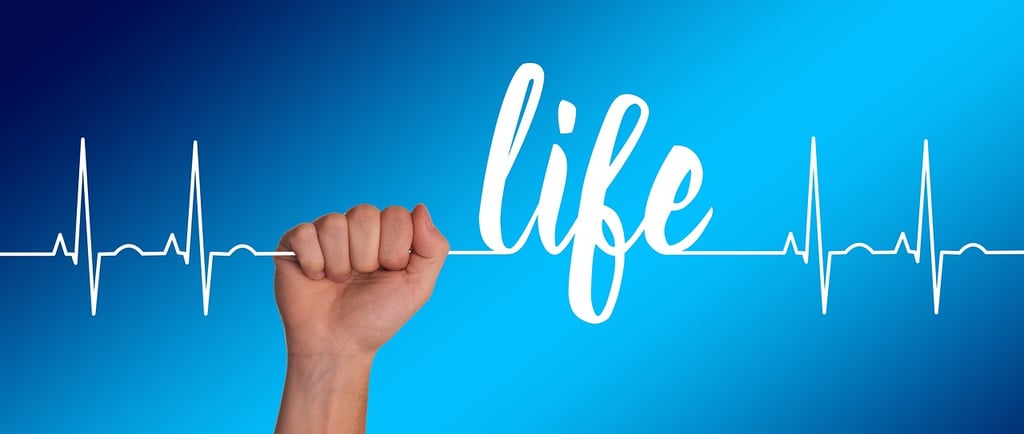Chronic Illness: From the Microcosm to the Macrocosm
This piece explores how stress, identity, and environment shape chronic disease. From ancient medicine to modern biopsychosocial models, it calls for an integrated, human-centered approach to healing
Luciano Luca Carlino
5/20/20253 min read


Jonathan Fuller (2018) explored the metaphysical nature of chronic illnesses by asking questions about what they truly are: objects, properties, processes, fictions, etc. The research was a bottom-up study, an inductive research, in opposition to the top-down method. This author theorized that illnesses are body properties that can be divided into dispositions (that emerge in some conditions) and categories (always present), as body properties include the distinctions between signs and symptoms.
Otherwise, let's take a step back by talking about Hippocrates and his theory of the humors. 2500 years ago, he said that we are a microcosm living in a macrocosm; an idea that holds if we think of the body as a complete system, just as the Earth and the place in which the microcosm lives are composed of nature, seasons, weather, etc. Everything needs to be in balance to live well: the microcosm with the macrocosm, a concept well explained by Engel’s biopsychosocial model.
Let’s mix the previous topics. What can we understand from that? Wahl et al. (2009) studied the link between chronic pain and quality of life. Symptoms such as stress became the most relevant factors influencing the subjective perception of health, chronic pain, and fatigue. This study underlined the difficult link between pain and wellness by showing how psychological and subjective determinants can result in pain itself.
Let’s go beyond Wahl et al. by considering the research of Tijken et al. (2005), who discussed the comorbidity involving the connection between body and brain. For example, in the Netherlands, 57% of cardiopathic patients were found to have at least one or more chronic illnesses.
By summarizing everything, we can say, thanks to Schneiderman (2004), that the biopsychosocial factors of chronic illnesses are influenced by behaviors, psychological elements, and social determinants. Depression, hostility, and chronic stress are connected to a higher risk of mortality. At the same time, socio-economic status (SES) plays an important role, as lower economic levels are associated with poorer health. Why? Low income is often connected to lower education, reduced access to healthcare, and living in rural areas.
So: Lower economy = lower access to medicine = lower capacity to heal = poor health.
Hippocrates linked medicine, philosophy, and cosmology. We have evolved since he theorized these ideas, but he understood an important point: how the dialogue between microcosm and macrocosm is bidirectional, and how even a chronic illness can determine a higher risk of comorbidity with anxiety, depression, and social isolation.
Helgeson & Zajdel (2017) researched the sense of self in chronic illness, reinforcing how much Charmaz (1995) was correct with her concept of Illness Identity, which involves the rebuilding of self-narratives and the influence on the Hippocratic macrocosmic self. This process results in reduced self-efficacy and a diminished capacity for resilience, both key aspects for living a happy life.
Otherwise, they identified the importance of a multimodal approach to treat these problems, such as cognitive training based on mindfulness and the creation of support programs tailored to specific subjective vulnerabilities. We can add to these therapeutic options the work of Berg & Upchurch (2007), who argued that training in problem-solving capacity and emotional regulation is also essential.
Theory and practice must advance together. A multimodal approach has the potential to improve the real and practical quality of life. Life can be enhanced when the microcosm and macrocosm, within the biopsychosocial framework, progress in a balanced and integrated way.
(567 Words)
References
Berg, C. A., & Upchurch, R. (2007). A developmental-contextual model of couples coping with chronic illness across the adult life span. Psychological Bulletin, 133(6), 920–954. https://doi.org/10.1037/0033-2909.133.6.920
Charmaz, K. (1995). The body, identity, and self: Adapting to impairment. The Sociological Quarterly, 36(4), 657–680. https://doi.org/10.1111/j.1533-8525.1995.tb00459.x
Engel, G. L. (1977). The need for a new medical model: A challenge for biomedicine. Science, 196(4286), 129–136. https://doi.org/10.1126/science.847460
Schneiderman, N., Ironson, G., & Siegel, S. D. (2005). Stress and health: Psychological, behavioral, and biological determinants. Annual Review of Clinical Psychology, 1, 607–628. https://doi.org/10.1146/annurev.clinpsy.1.102803.144141
